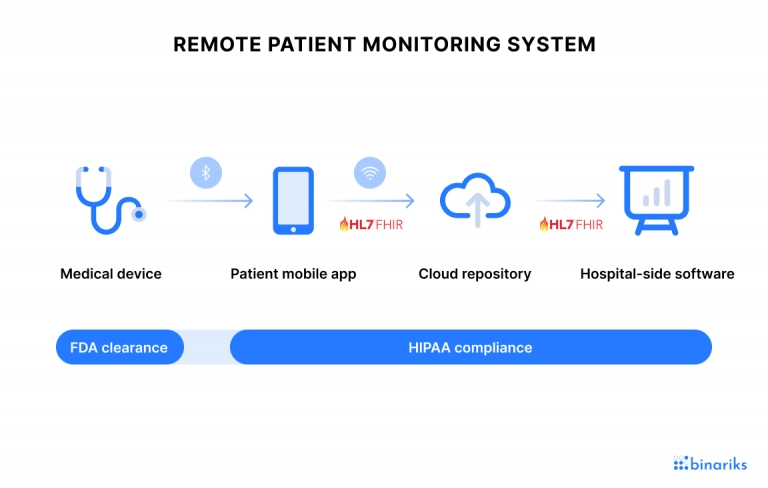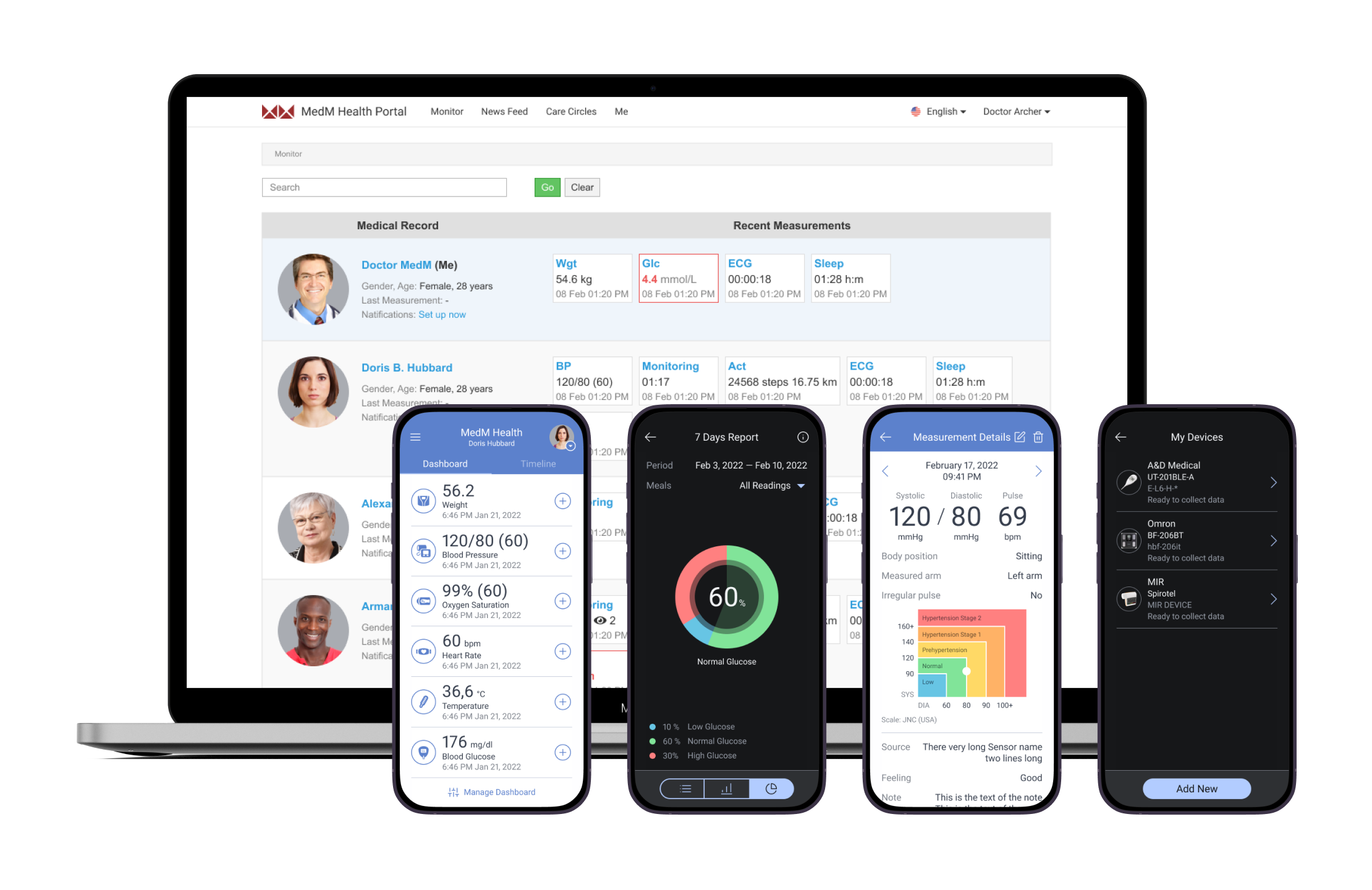Leading Remote Patient Monitoring Platform: Advanced Characteristics and Perks
Leading Remote Patient Monitoring Platform: Advanced Characteristics and Perks
Blog Article
The Future of Healthcare: Remote Client Monitoring Simplified
As healthcare continues to develop, one area that holds tremendous pledge is remote person tracking. The idea of simplifying this procedure through technological developments is improving the means care is provided and received. With a concentrate on boosting individual outcomes and enhancing healthcare delivery, remote surveillance is poised to change the sector. By checking out the advantages, technical innovations, and future fads in this field, we can gain valuable insights into the transformative potential of remote client surveillance.
Benefits of Remote Patient Monitoring
Remote client monitoring offers a wide range of benefits for both healthcare carriers and clients alike. One substantial advantage is the capacity to constantly check individuals' essential signs and wellness information from another location. This real-time tracking makes it possible for healthcare providers to spot any type of worrying changes or patterns immediately, resulting in very early interventions and possibly stopping medical emergency situations. Furthermore, remote person monitoring improves the general quality of care by giving a much more thorough and all natural sight of clients' health and wellness status beyond typical in-person sees.
Additionally, remote client tracking can lead to better person outcomes and fulfillment. Remote tracking can decrease the requirement for constant medical facility visits, reducing healthcare expenses for both individuals and service providers.
Modern Technology Driving Remote Surveillance
In the realm of modern-day healthcare, technical advancements play a pivotal function in driving the advancement and effectiveness of remote client tracking. The assimilation of innovative technologies such as wearable gadgets, mobile applications, and cloud-based platforms has changed the means healthcare companies from another location manage and check patient health - remote patient monitoring software. These innovations allow continual real-time monitoring of essential indications, medication adherence, and various other important health data, permitting timely treatments and personalized care strategies
One key modern technology driving remote tracking is the Internet of Things (IoT), which allows seamless connection in between medical devices and healthcare systems. IoT tools such as smartwatches and cordless sensing units accumulate and transfer patient data to central platforms, assisting in remote tracking from throughout the world. Expert system (AI) and artificial intelligence algorithms even more boost remote surveillance by examining large quantities of client information to detect patterns, forecast wellness trends, and sharp doctor to possible issues.
Impact on Medical Care Delivery
With the assimilation of sophisticated technologies driving remote client surveillance, the impact on medical care distribution is coming to be transformative and increasingly profound. Remote person monitoring permits healthcare suppliers to supply even more tailored and aggressive treatment to patients, causing boosted wellness end results and reduced medical facility admissions. By from another location tracking vital indicators, signs, and medication adherence, medical care professionals can interfere early, avoiding issues and enhancing the total quality of treatment.
In addition, remote surveillance enhances accessibility to medical care services, particularly for people in underserved or country areas. Clients can get constant tracking and support from their homes, eliminating the requirement for constant in-person brows through. This not only saves time and minimizes prices for both patients and healthcare facilities but also decreases the danger of direct exposure to contagious diseases, a vital consideration in the present health care landscape.
Additionally, remote client monitoring allows health care service providers to much better focus on and have a peek at these guys assign sources treatment based on real-time data. By recognizing risky individuals and stepping in without delay, medical care distribution comes to be much more effective and reliable, inevitably resulting in a more sustainable and patient-centered medical care system.
Improving Patient Results

Furthermore, RPM enables positive management of persistent conditions, decreasing the chance of severe our website worsenings and medical facility readmissions. Individuals take advantage of increased ease and convenience, as they can receive treatment in their very own homes while remaining linked to their doctor. This continuous surveillance not only improves person contentment yet likewise promotes a feeling of empowerment and involvement in their very own health and wellness administration.
Future Trends in Remote Monitoring
Accepting cutting-edge modern technologies in remote person monitoring is shaping the future landscape of health care shipment. One significant pattern is the increased use of wearable tools and sensors to gather real-time data, allowing healthcare providers to monitor people continually without the requirement for regular in-person brows through.

Furthermore, telehealth platforms are coming to be more sophisticated, enabling for virtual assessments, remote medical diagnosis, and remote patient keeping track of all in one integrated system (best remote patient monitoring software). This holistic technique to remote monitoring is enhancing healthcare delivery, boosting client contentment, and ultimately, boosting overall top quality of care
Conclusion
Finally, remote person tracking uses numerous advantages in health care distribution, driven by advancements in technology. It has the possible to enhance person results and change the method health care is delivered. Future fads in remote monitoring will continue to form the landscape of healthcare, giving possibilities for more efficient and tailored person treatment.
Remote person tracking offers a multitude of benefits for both medical care providers and people alike. In addition, remote person monitoring enhances the general quality of care by offering a much more thorough and alternative view of clients' wellness standing beyond conventional in-person brows through.
Moreover, remote client surveillance can lead to enhanced client results and satisfaction. Remote client surveillance allows health care companies to supply even more customized and positive care to patients, leading to improved health outcomes and lowered healthcare facility admissions. Remote person monitoring (RPM) plays a considerable role in enhancing patient results by offering constant, real-time data that enables medical care providers to intervene immediately and change treatment strategies as needed.
Report this page